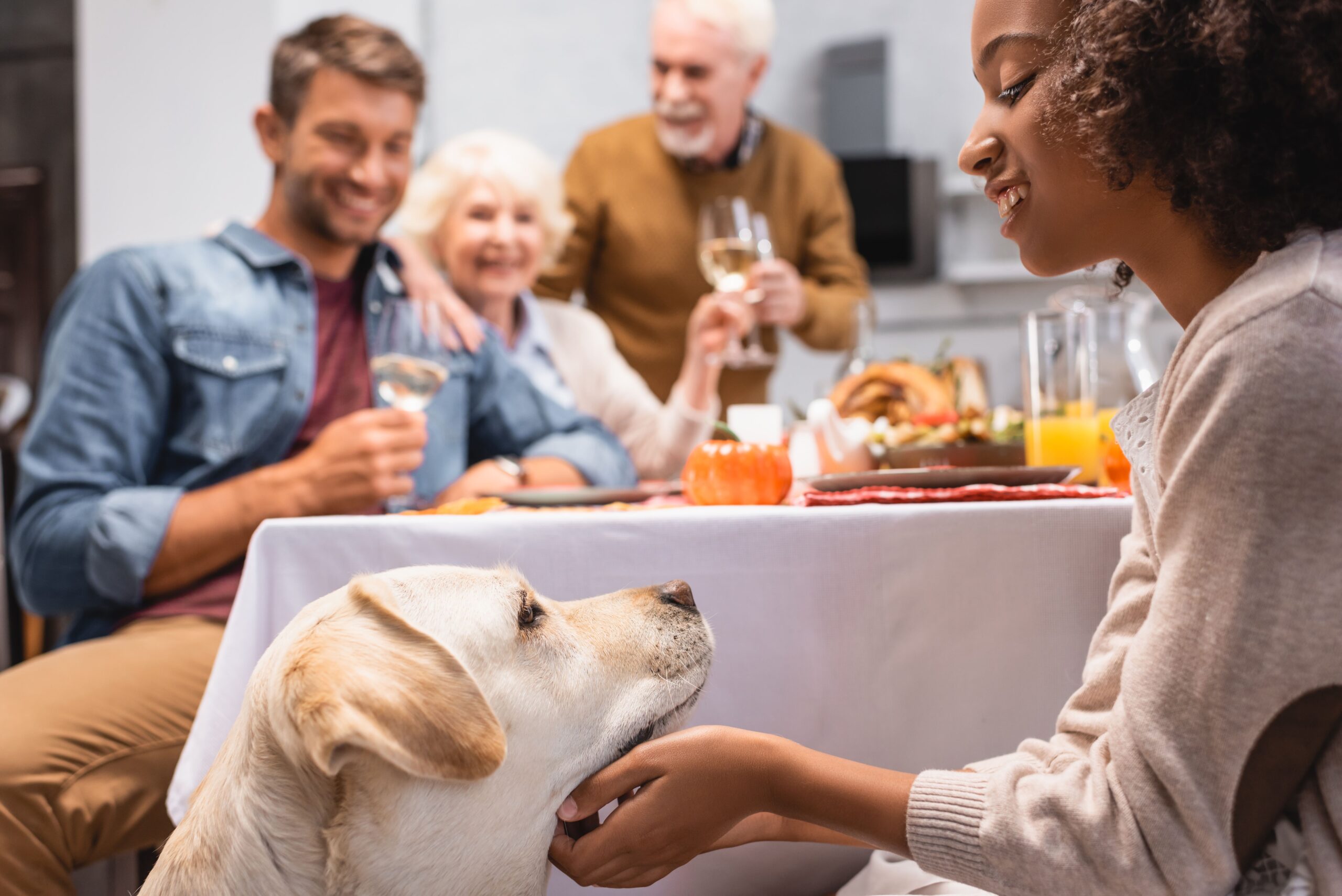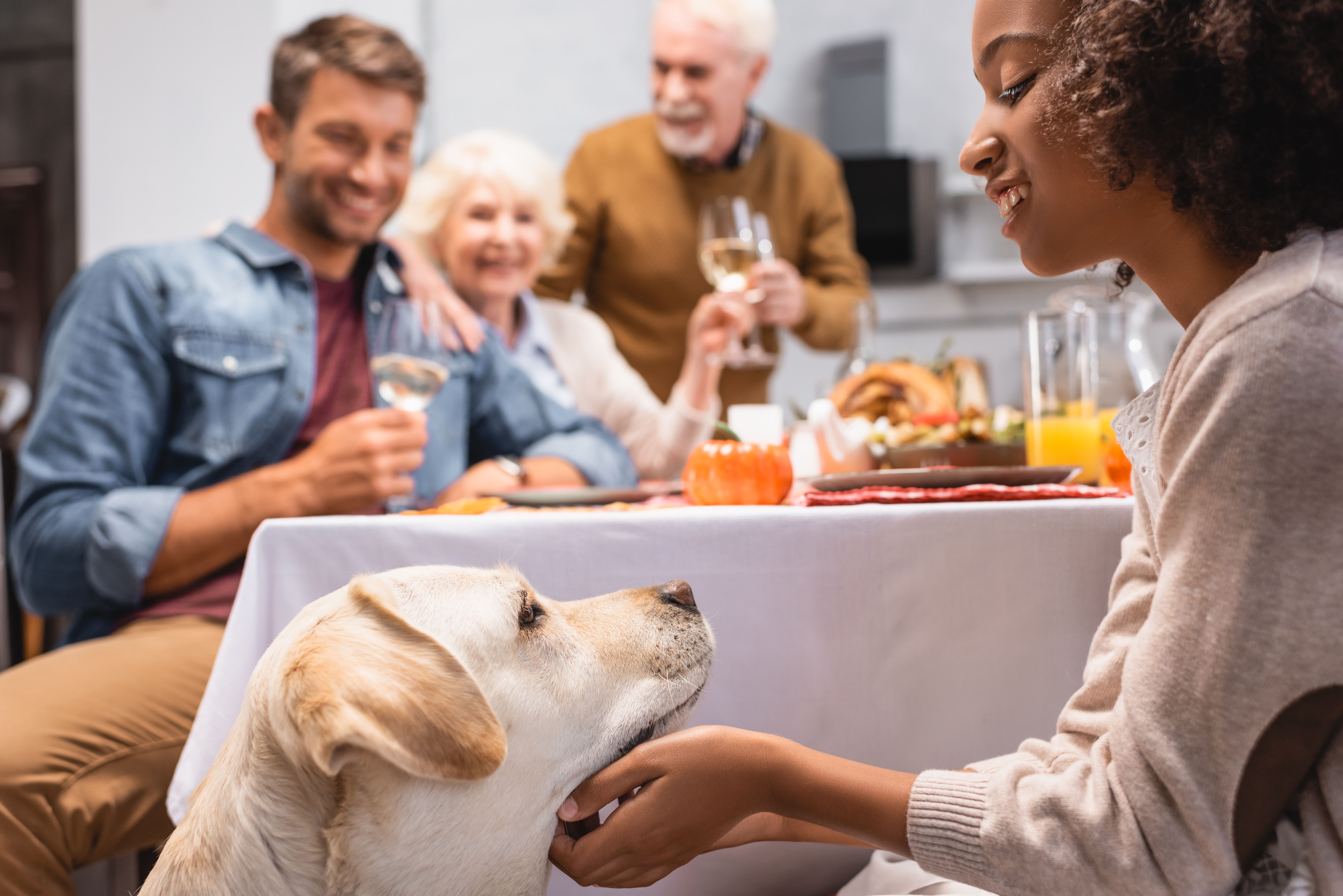Tips for a safe and joyous holiday season

Photo: Lightfield Studios/Adobe Stock

The holiday season is typically spent celebrating with loved ones, including pets. However, as accidents happen or family and friends who are not used to being around pets come to visit, there may be a trip to the emergency department in store for some clients. It is crucial for veterinary teams across the country to be sure their clients know the risks to pets that lurk within some holiday favorites.
“We receive more potential poisoning calls in November and December than any other time of the year,” said Renee Schmid, DVM, DABT, DABVT, a senior veterinary toxicologist at Pet Poison Helpline.1 “Some of the biggest threats during the holidays are toxins that are prevalent throughout the entire year, like lilies, chocolate, xylitol, and medication, but there are many toxic items that are specific to the holidays, such as eggnog.”
To help keep patients safe and out of the emergency department this holiday season, here are some tips veterinary teams can share with clients.
The meal from start to finish
Pumpkin and Peanut Butter Treats
If clients or guests want to be able to give pets a treat that is safe for them, here is a recipe veterinary teams can share with clients2:
Pumpkin and Peanut Butter Treats
Ingredients:
- 2½ c of whole wheat flour
- 2 tbsp peanut butter
- 2 eggs
- ½ tsp ground cinnamon
- ½ c canned pumpkin
Recipe:
- Preheat oven to 350 °F
- Combine flour and cinnamon
- Whisk together eggs, pumpkin, and peanut butter
- Add the flour mix to the pumpkin mix until combined; the dough will be a little dry
- Roll the dough to ½-in thickness and use cookie cutters to make fun shapes
- Place on an ungreased cookie sheet and bake for about 40 minutes (until hard)
Although many pet owners or guests at their home will slip their treats to companion animals under the table, veterinary teams should warn clients that eating any leftovers from a turkey, such as a carcass, string, and bones, can be a threat to pets. The skin of the turkey and any dark meat are dangerous for pets because the skin contains high levels of fat that can be hard for dogs to digest, and consumption of bones can lead to obstruction in the esophagus, stomach or intestines.2,3
Amber Karwacki, DVM, from Heart+Paw, also explained that certain foods used for cooking, such as garlic and onions, are toxic to pets, so clients will need to be on the lookout for that.2 Other foods that cause severe illness in dogs and cats include grapes and raisins and chocolate.3
Table foods can lead to acute gastroenteritis or pancreatitis in dogs. Signs of these conditions include vomiting, diarrhea, abdominal pain, and listlessness, according to the Louisiana State University School of Veterinary Medicine (LSU Vet Med) in Baton Rouge. In dogs and cats, grapes, raisins and onions can cause acute kidney failure, anemia or seizures; and gastrointestinal, cardiovascular and neurologic disease can occur when pets consume chocolate.
If pet owners want their companion animals to be involved in the feast, clients can make for them skinless, unseasoned chicken breast with sweet potatoes. If their pet likes a crunch, let clients know it is safe to add some baby carrots to their pet’s meal.
Karwacki also encouraged pet parents to ensure all countertops or spaces accessible to pets are clear of trash and food unless they are being watched. Once the trash is discarded, pet owners should be sure that it was properly disposed of in a trash bag and out of reach of animals.
Decking the halls (safely)
Whether clients are of the belief they should decorate before Thanksgiving or wait until after, some holiday classics may be cheerful to look at but dangerous if ingested by pets. Some of the top plants veterinary teams need to warn pet parents about are autumn crocus (Colchicum autumnale), chrysanthemums (mums), acorns, and lilies.
“Cats are particularly sensitive to true lilies, and need quick access to veterinary care when exposed,” Schmid said. “If they receive proper care within a few hours after ingestion, their chances of survival are extremely high. If they do not receive proper care, or care is delayed, the chances of survival drop significantly, with some studies reporting a 100% fatality rate.”
In an interview with dvm360, Schmid explained that when decorating, clients need to clean up pine needles that fall off the tree. Even though they are not toxic, they can cause significant gastrointestinal issues, vomiting, and diarrhea.
Schmid also shared that a common craft project that families make or are gifted during the holidays is not one many people realize is toxic to pets. “One of the big ones that comes to mind would be those handmade salt dough ornaments. A lot of times if you have children in the house, it’s a very common project [and] a very common gift that they’ll make in school and then bring home. And these contain a high amount of salts,” Schmid explained. “When an animal gets into that, or chews it and eats it, it usually has an enticing smell to it as well, so it makes it a little bit more readily edible. And that’s something that we can see salt toxicity from, and so then we can see some very significant neurologic signs from that.”
Holiday decorating often comes with additional electrical cords and batteries around the home. According to LSU Vet Med, pets that chew on electrical cords can receive an electric shock, and some animals also try to eat batteries. These items can cause significant harm to pets and should be kept safely out of reach.
Be our guest
When clients welcome family and friends to their home, it is important to explain to clients how careful they need to be when visiting. For example, if they are leaving their suitcases on the floor of the room they are staying in, there is a risk of pets getting into whatever they have in there, including medications. Veterinary teams can remind clients of this potential danger for their pets and encourage them to have their guests keep luggage out of reach or locked up when possible.
Karwacki also disclosed that having new guests in your home and throwing off your pet’s normal routine can increase their anxiety. She encouraged clients to prepare a separate room for their pets with all their toys and beds. Here, they have a safe and quiet place they can escape to if they need a break from all the excitement.
Wrapping it up
Everyone wants to spend the holidays with people, and the pets, they love. No one wants to spend their holiday season in the emergency department worried sick about their pet who got into the eggnog on the counter or pulled some turkey skin out of the trash. Educating your clients ahead of time and warning them of what they need to look out for can help make everyone’s holiday season happy and healthy.
References
- Holiday pet dangers. News release. Pet Poison Helpline. November 15, 2023. Accessed November 15, 2023. https://prnmedia.prnewswire.com/news-releases/holiday-pet-dangers-301988269.html
- Heart + Paw Veterinarian shares 4 tips to keep your pet safe this Thanksgiving. News release. Heart+Paw. November 20, 2023.
- Keep your pets healthy and safe during the holidays. News release. Louisiana State University School of Veterinary Medicine. November 1, 2023. Accessed November 20, 2023. https://www.lsu.edu/vetmed/news/2023/holiday_hazards.php
